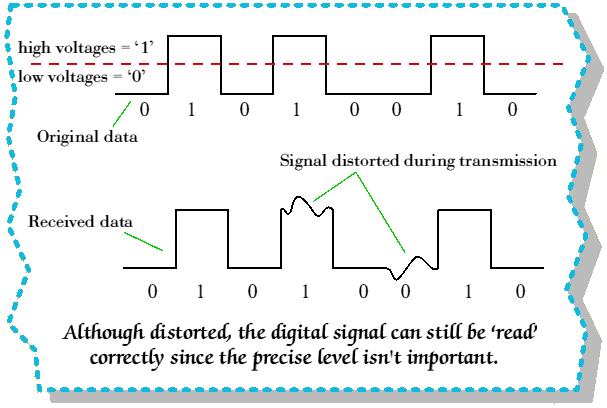- One advantage of digital circuits when compared to analog circuits is that signals represented digitally can be transmitted without degradation due to noise. For example, a continuous audio signal, transmitted as a sequence of 1s and 0s, can be reconstructed without error provided the noise picked up in transmission is not enough to prevent identification of the 1s and 0s. An hour of music can be stored on a compact disc as about 6 billion binary digits.
- In a digital system, a more precise representation of a signal can be obtained by using more binary digits to represent it. While this requires more digital circuits to process the signals, each digit is handled by the same kind of hardware. In an analog system, additional resolution requires fundamental improvements in the linearity and noise characteristics of each step of the signal chain.
- Computer-controlled digital systems can be controlled by software, allowing new functions to be added without changing hardware. Often this can be done outside of the factory by updating the product's software. So, the product's design errors can be corrected after the product is in a customer's hands.
- Information storage can be easier in digital systems than in analog ones. The noise-immunity of digital systems permits data to be stored and retrieved without degradation. In an analog system, noise from aging and wear degrade the information stored. In a digital system, as long as the total noise is below a certain level, the information can be recovered perfectly.
Finally one question to the readers

Informative Initiative Bro ! Enjoyed the posts and learnt a lot. All the Best :)
ReplyDeleteThank you Vinesh. We are trying to improve the contents so the electronics students can learn all the fundamentals under one umbrella.
ReplyDeleteKeep visiting our Blog!!!
Thanks for sharing these information. It’s a very nice topic. We are providing online training classes
ReplyDeleteBest Salesforce Training Institute in Noida
Best Salesforce Admin Training Institute in Noida